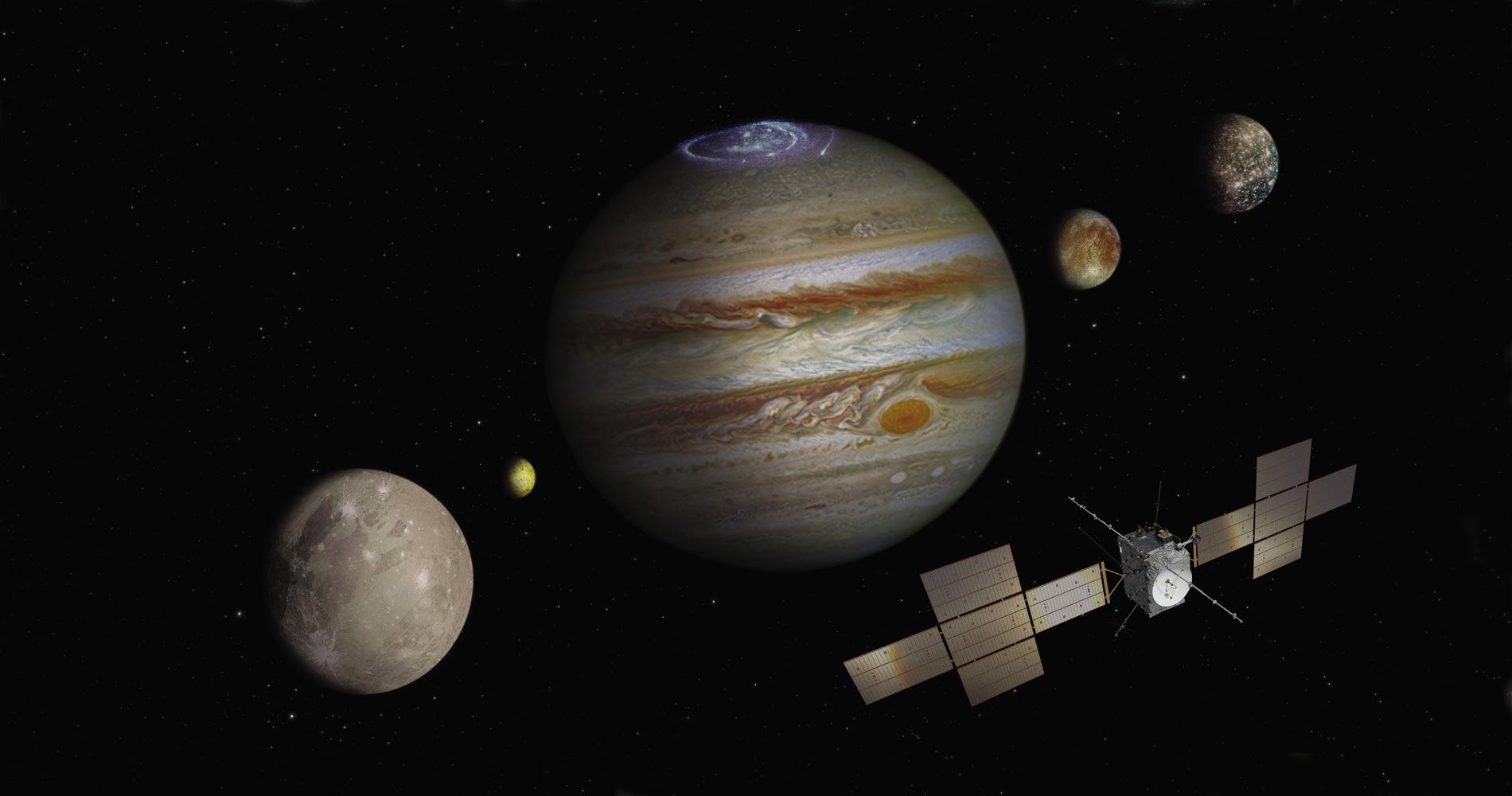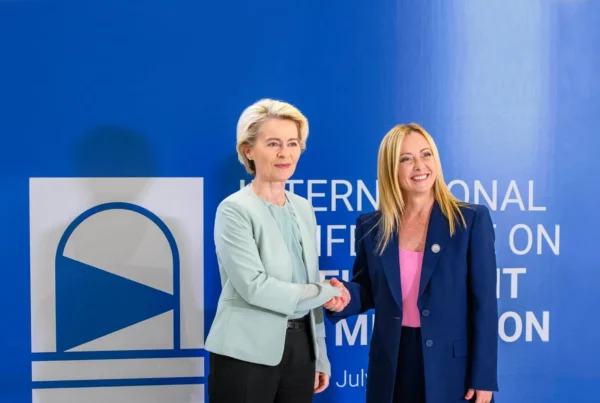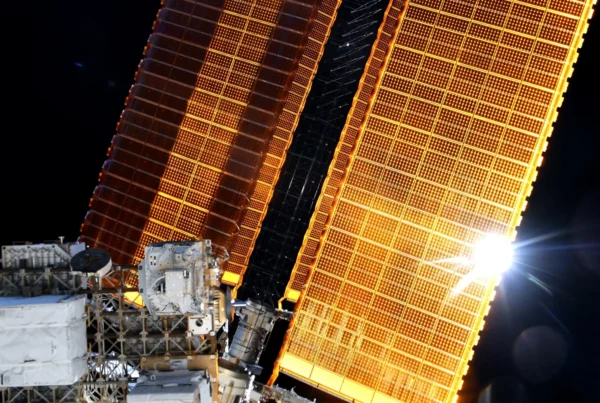ESA has recently confirmed that the Ariane 6 will be launched in the fourth-quarter of 2023. Its goal is to replace the Ariane 5 and confirm the European Union’s common goal of space independence. JUICE was launched in April on an Ariane 5 rocket to search for signs of life on Jupiter’s moons.
Daniella Vanova, 16 May 2023
Spanish version
Ariane 6 is an expendable launch system. Since 2010, Ariane 6 has been developed by the Ariane Group on behalf of the European Space Agency (ESA). The decision to start its development was inaugurated at the ESA Council at the Ministerial level meeting in December 2014. The main motivation behind its development was to maintain Europe’s leadership in the fast-changing commercial space launch market. This will facilitate a larger communication network and support Europe’s aim for independence in accessing and using space.
The initial plan was for Ariane 6 to be launched in 2020 and replace the already space-based Ariane 5. However, owing to the Covid-19 pandemic, the launch was three years behind schedule. Recently, the director of ESA’s Paris headquarters, Josef Aschbacher, indicated that sufficient progress has been made towards the inaugural Ariane 6 launch, which is scheduled for the final quarter of 2023.
However, with a project of such magnitude, the planned date and program for the launch have to be fixed. In the case of Ariane 6, the much-delayed launch is expected to have a lasting impact as it will be considered a milestone. Even before the launch takes place, Aschbacher stated that three milestones had to be achieved before the launch.
To attain successful completion, the upper stage hot firing test will be conducted at the engine and stage testing center of Germany’s DLR aerospace agency in Lampoldhausen and on the launch pad in French Guiana. Long before the actual launch, a deeper and more interconnected testing will take place in French Guiana. As an initial test, the Vulcain 2.1 engine must go through a so-called combined test campaign. This it to validate the rockets and launch pad as a unified system. Once completed, the campaign moves forward. Solidifying the ground infrastructure and conducting proper tests will significantly reduce the cost and time of an Ariane 6 launch campaign.
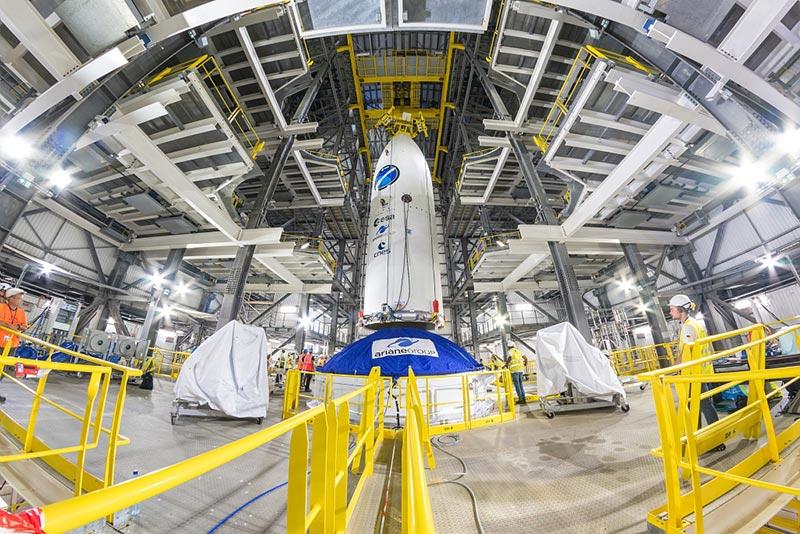
Picture: Ariane 6 Transfer and hoisting of the Ariane 6 onto the launcher. Transfer of the Ariane 6 fairing onto the launcher to the ELA-4 gantry tower and subsequent placement of the Ariane 6 fairing onto the launcher on 11 July 2022 at Europe’s Spaceport in Kourou, French Guiana. © Credit ESA-M.Pedoussaut
The new technological innovation that has gone into the construction of Ariane 6 will harness the flexibility to launch both heavy and light payloads into a wide range of orbits. These tasks consist of Earth observation, telecommunication, meteorology, science, and navigation. Such an intricate project to attain European independence in satellite and communication calls for a unified European funding.
Three countries, France, Germany, and Italy, are the three largest contributors to the European Space Agency. Jointly, the countries have agreed to guarantee the future of the next-generation Ariane 6 and to fund space development programs. To secure space independence and avoid a bi-polar Chinese-US space competition, the ESA is asking its members to contribute a total of EUR 18.5 billion over the next three years. This will ensure, as France’s economy minister Le Maire stated, that “Europe… be united in space”, emphasizing that “there is a price for independence. If we want to be independent, we have to put money on the table.”
A new space development which scientists think could support living organisms – The Jupiter Icy Moons Explorer (JUICE) – has lifted off from French Guiana on 14 April to begin its eight-year journey to Jupiter. JUICE was launched on ESA’s Ariane 5 rocket. JUICE’s mission is led by ESA. It will focus on three possible ocean-bearing moons of Jupiter – Callisto, Europa and Ganymede. Currently, without much research, it is thought that these moons possess huge oceans of water.
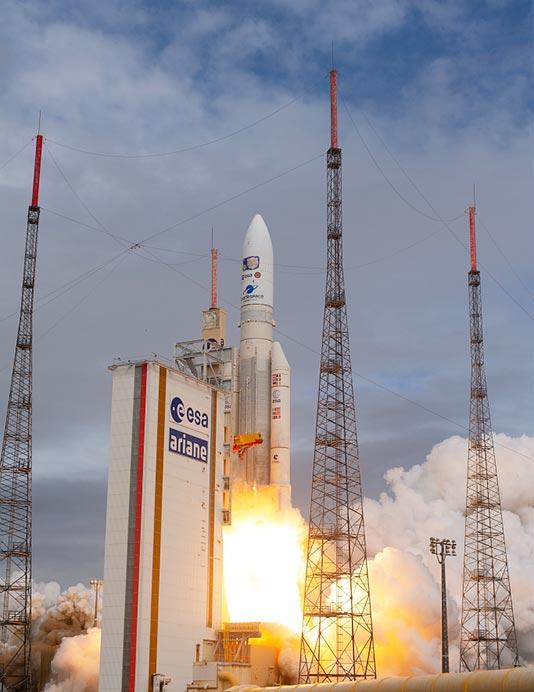
Picture: JUICE Launch picture 14 April 2023. © Credit ESA-S.Corvaja
Nicolas Altobelli, a JUICE project scientist at ESA, stated it would be the “first time that we explore habitats beyond the frost line” between Mars and Jupiter. This is ESA’s first mission to a Jovian orbit system. It is also the first mission to a moon other than Earth’s moon. The importance of this journey lies in what can be investigated and discovered. The investigation will involve an in depth exploration of Jupiter’s gaseous complex surface including its relationships with the oxygen and icy sub-surface saltwater ocean moons. By July 2031, the JUICE spacecraft will have entered the orbit of Jupiter and will continue to explore Ganymede, Europa, and Callisto.
Once further investigated, it is hoped that Jupiter’s icy moons will have some kind of living organisms. This is based on what is already known from Earth. Even the smallest of microbes such as bacteria and archaea have been found to be able to survive on the Earth without sunlight and, therefore, may be able to be found elsewhere as well. Furthermore, the moons that will be explored – Ganymede, Callisto, and Europa–also share common properties that resemble those of the Earth.
Ganymede, the largest moon in the solar system, is said to be the only moon that possesses its own magnetic field. Callisto, said to have the oldest surface in the solar system, will be explored with the intention of studying its environment. Europa is believed to have a young and active surface that could emit water vapor into space “via plumes and geysers.” The mission on Europa is to search for any pockets of water and look for signs of activity.
If one or more of Jupiter’s moons checks off the criteria to host life, the next potential step would be to send a mission to land on its surface. This would be a large step in proving the existence of life beyond Earth.


